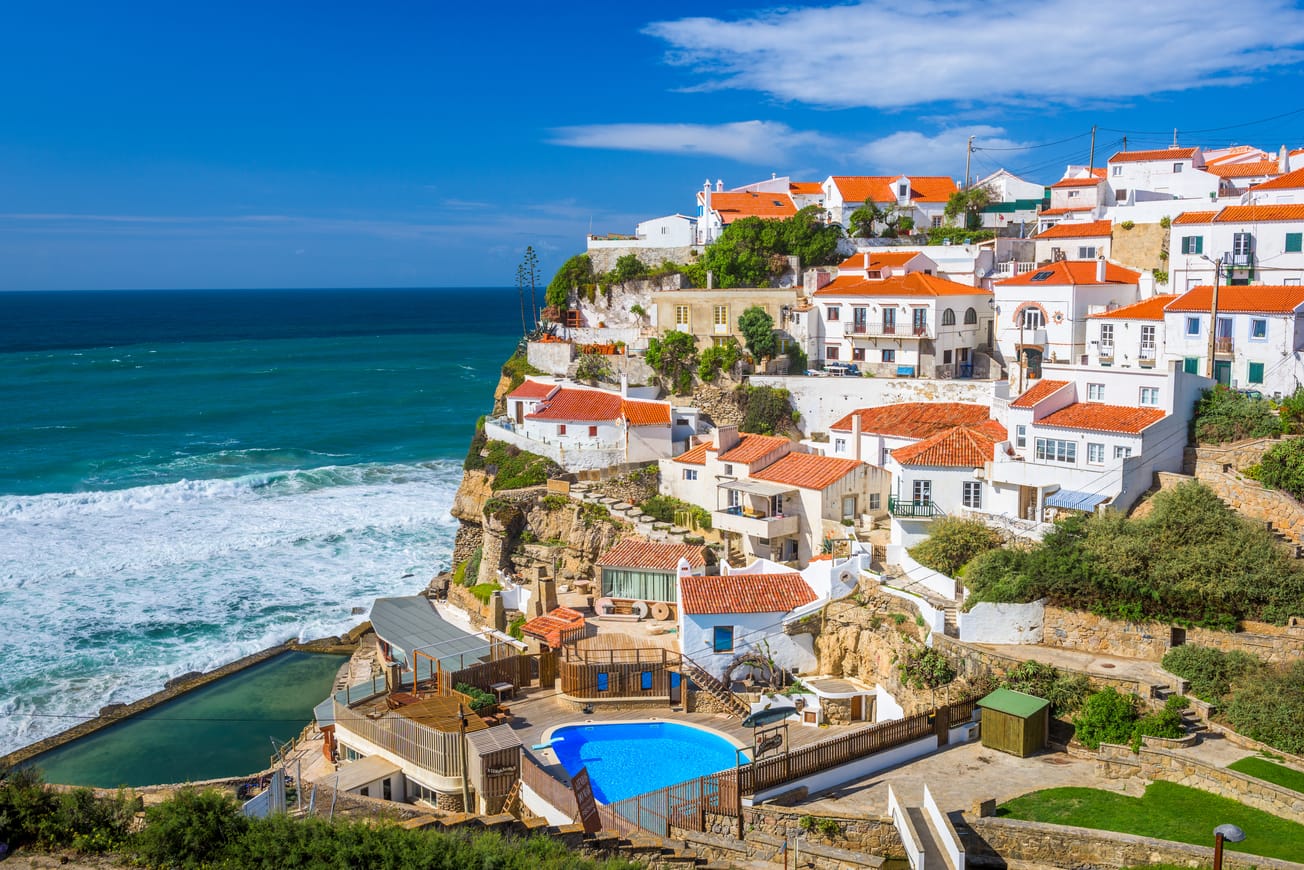Now part of the U.S. Department of Commerce, The National Institute of Standards and Technology (NIST) was founded in 1901 with a mission “To promote U.S. innovation and industrial competitiveness by advancing measurement science, standards, and technology in ways that enhance economic security and improve our quality of life.” Similarly, New Jersey artist Michael Clineman is on a mission of innovation and artistry by repurposing surfboards and wetsuits that are made from “forever chemicals.” Due to their significant ability to resist heat and chemical changes, neoprene, fiberglass, and polyurethane foam break down slowly, naming them “forever chemicals.” The foams can easily leak into nearby water and soil and affect the surrounding ecology, raising concerns about their link to adverse health effects such as certain cancers.
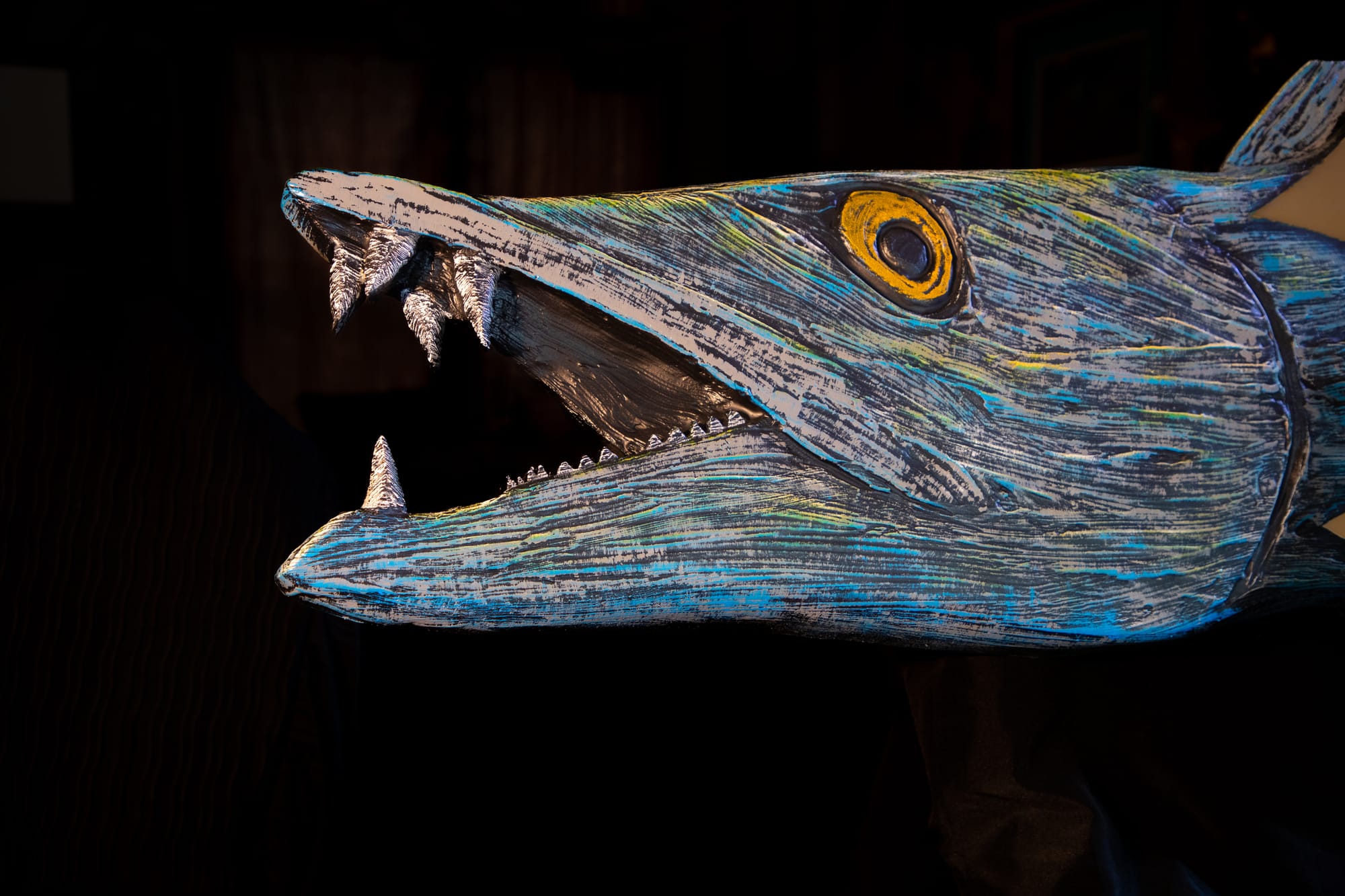
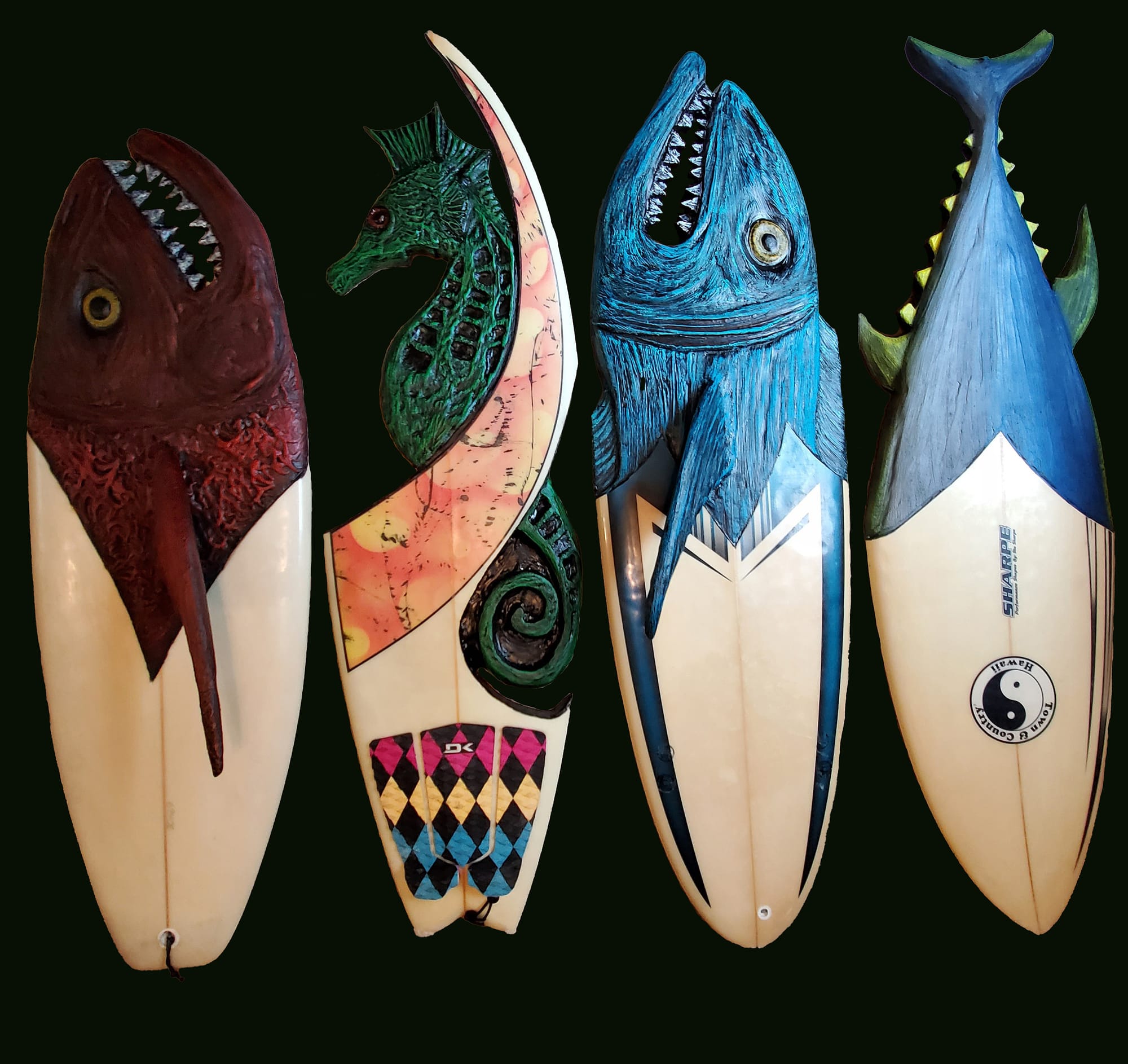
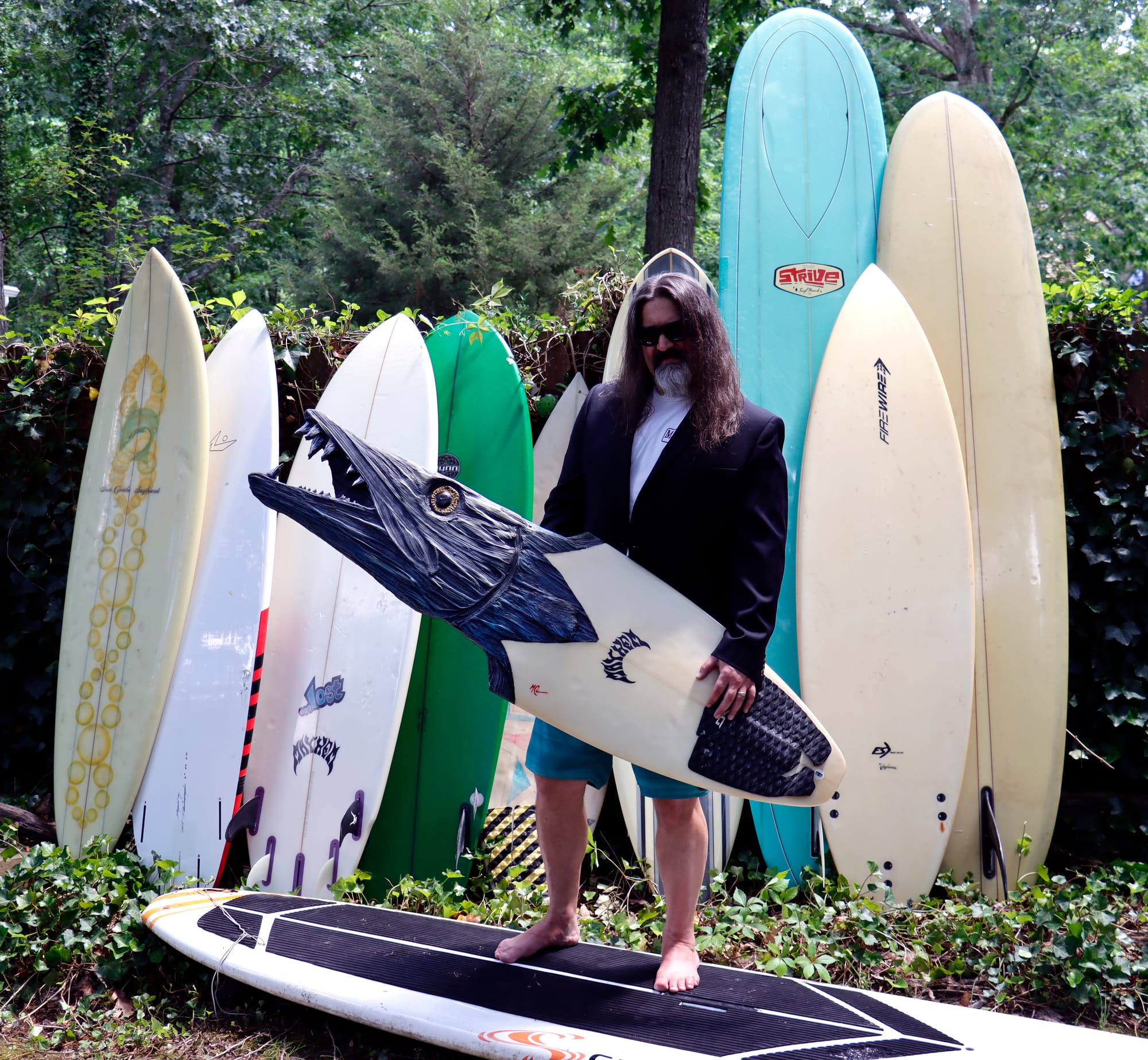
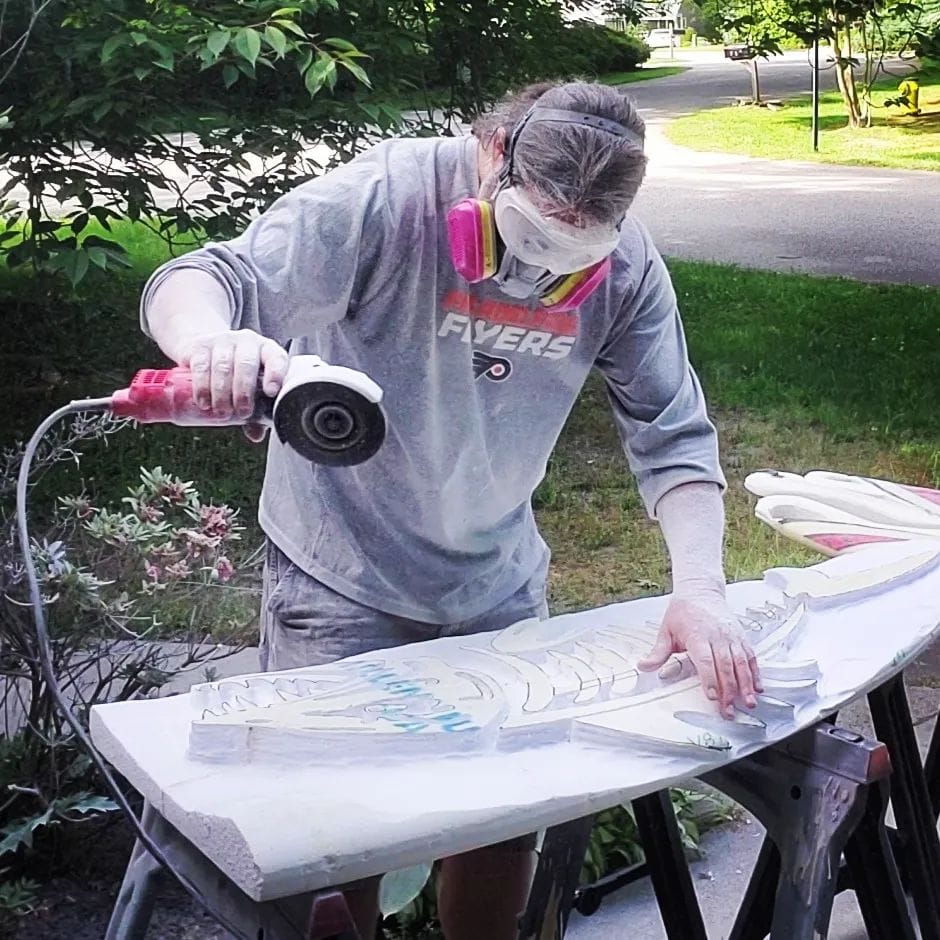
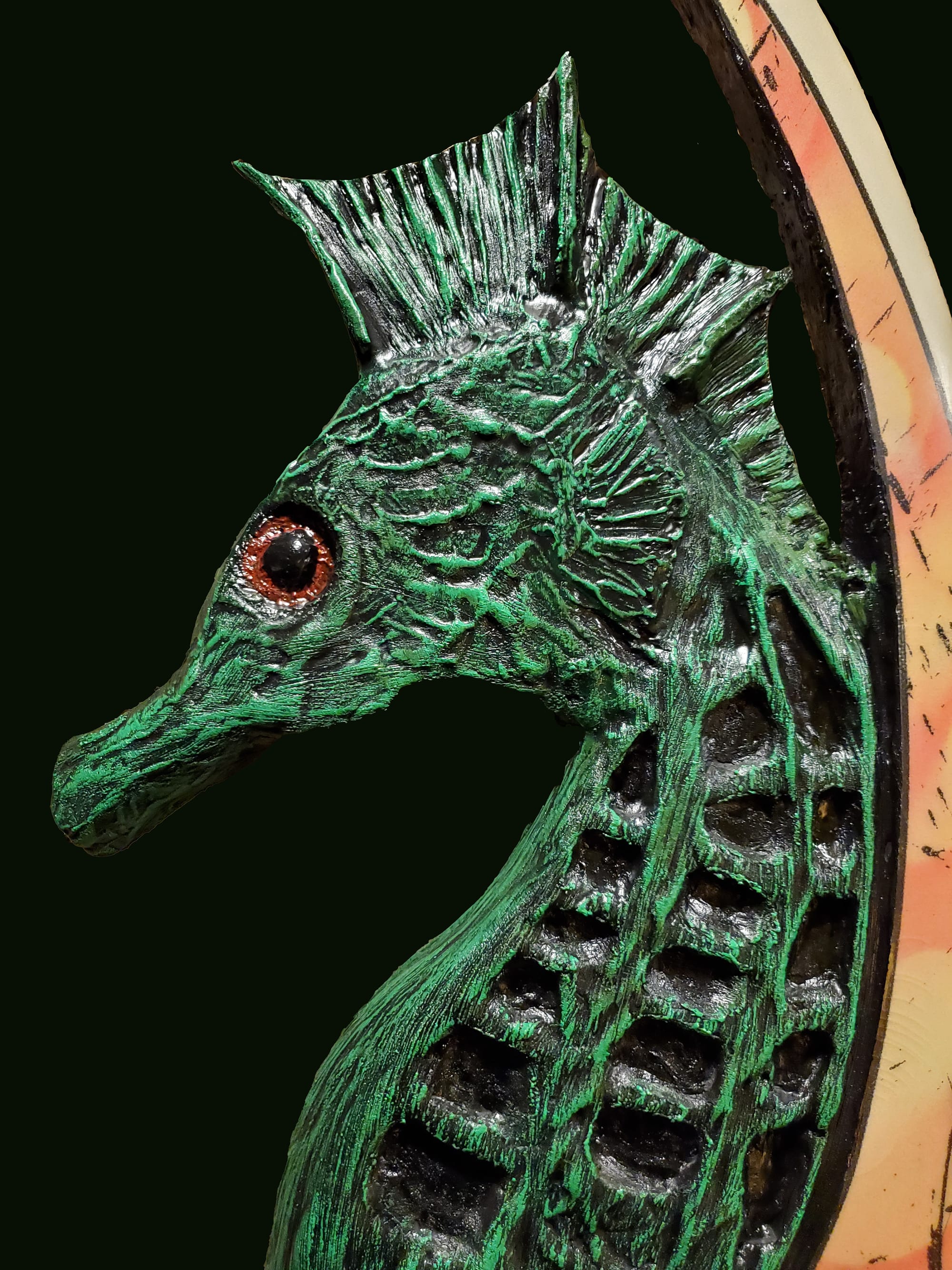
Pictured left to right from top: The Lost Barracuda, photo by David M. Pfeiffer; Board Collection, photo by Michael Clineman; Michael and his boards; Michael creating a board; Seahorse, photo by Michael Clineman
With over four decades of surfing experience, Michael's passion is transforming surfboards into art, contributing to environmental conservation. His journey began with a profound experience at the former House of Blues in Atlantic City, where he was exposed to a vast collection of outsider folk art. Meeting the artists and understanding their connection to their work inspired Michael to merge his love for surfing and the environment into his art, which he fondly refers to as 'Surfboard Taxidermy.'
For every artist, inspiration strikes in its unique way. For Michael, it comes to him while he's out on the water, surfing. 'There's a lot of quiet time between the sets of waves. It's a perfect opportunity to sit, clear your mind, and let your thoughts wander while you rise and fall on the swells. I often think about the boards I have in the garage during these moments. When I get home, I’ll pull out an old-school black-and-white composition book and start sketching my ideas. I try to capture the feeling more than the visual. The sketches evolve and get transferred onto the face of the surfboard, and then the carving begins, layer by layer. Once the final details are in place and the desired textures are conveyed, it's time to paint, seal, and hang the finished piece.
The best boards for most of his sculptures are thick in the chest and tail. The foam core must be in relatively good condition. Once the foam “yellows” from the sun or deteriorates from exposure to salt water, you can’t really get much out of it. It won’t carve without crumbling, and the hard sculpt coating will not adhere properly. Michael sources his boards from surfing buddies to putting a call out on social media. Living near the coast, the odds of a garage having at least one unwanted board are high.
When asked how he balances the functional aspects of a surfboard with its transformation into a work of art, he said, “A surfboard is a work of art before I ever touch it. The surfboard shaper spends many hours perfecting the board's curves, angles, and volume. The decisions they make about the surfboard’s dimensions are based upon years (sometimes decades) of experience riding boards that they have made.” Michael greatly respects the surfboard shapers and honors their talent by leaving critical indicators of their work in his finished pieces. For example, it could be a logo or signature, but more often, it's something more subtle, like a “sharp rail or a concave tail that only an experienced surfer would recognize.” A strong connection is made in the material transformation between Michael and the original surfboard shaper.
“One of the things that makes me appreciate an artist the most is individuality. Micheal Clineman has that. I love his surfboard sculptures; not only does he have excellent artistry, but he is unique. I am a fan,” says Californian professional surfer/artist Corky Carroll.
On the aesthetic surface, Surfboard Taxidermy should be seen as art, but beneath the waves, Michael wants viewers to take a moment and reflect upon the urgent need to preserve the ocean and environment. It becomes a call to action: participate in a beach cleanup, donate to an organization that protects it, or reduce water usage. Michael's Art is not just about aesthetics but also about inspiring action and change, making the audience feel motivated and inspired to contribute to environmental conservation.



